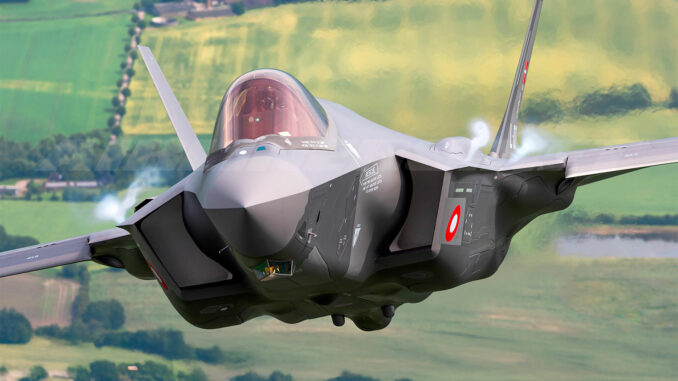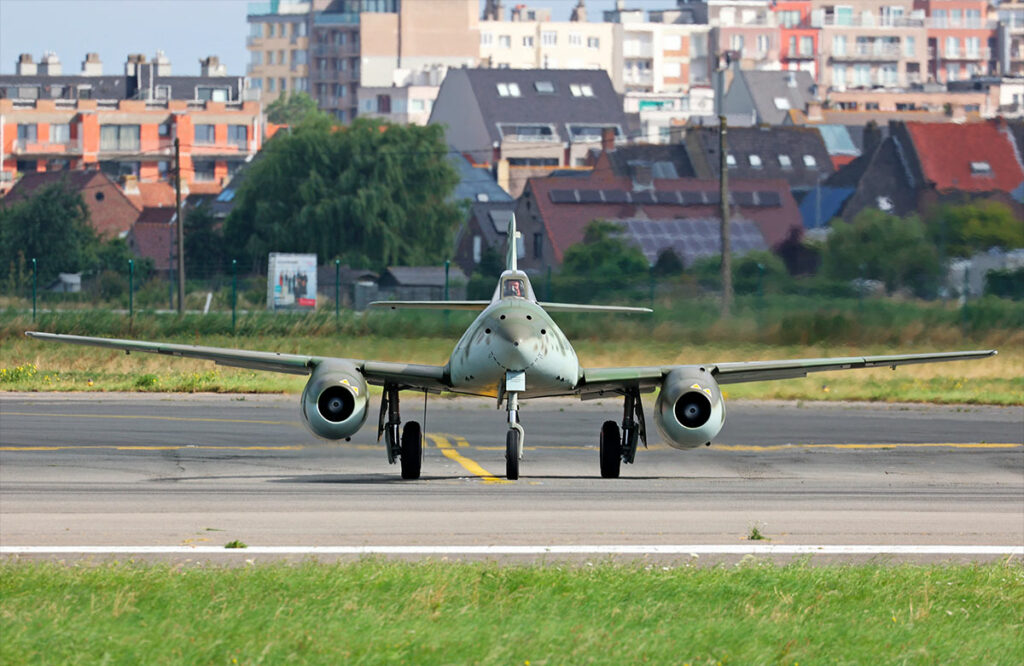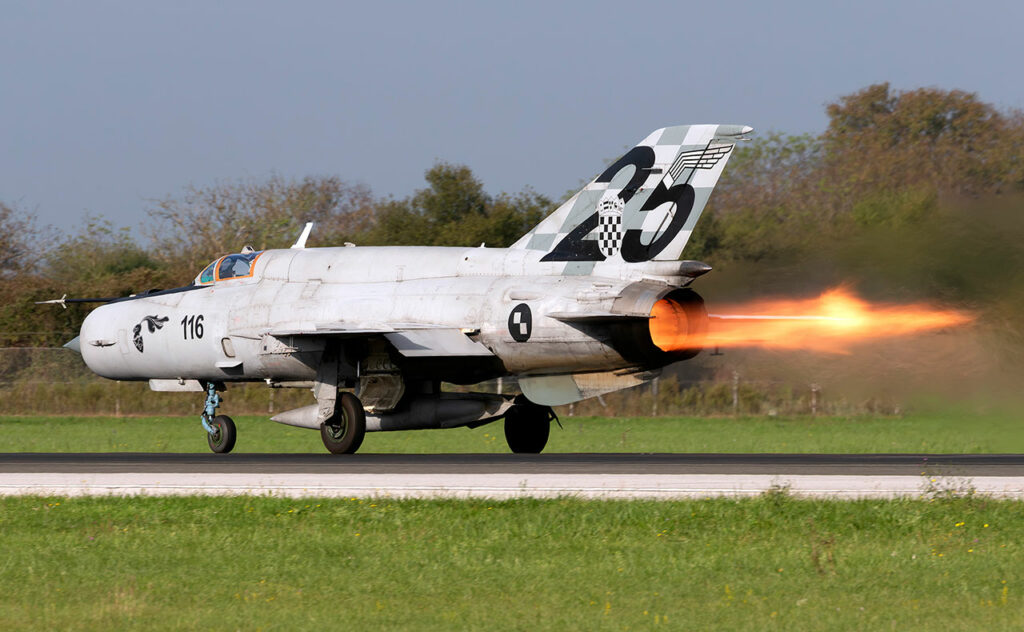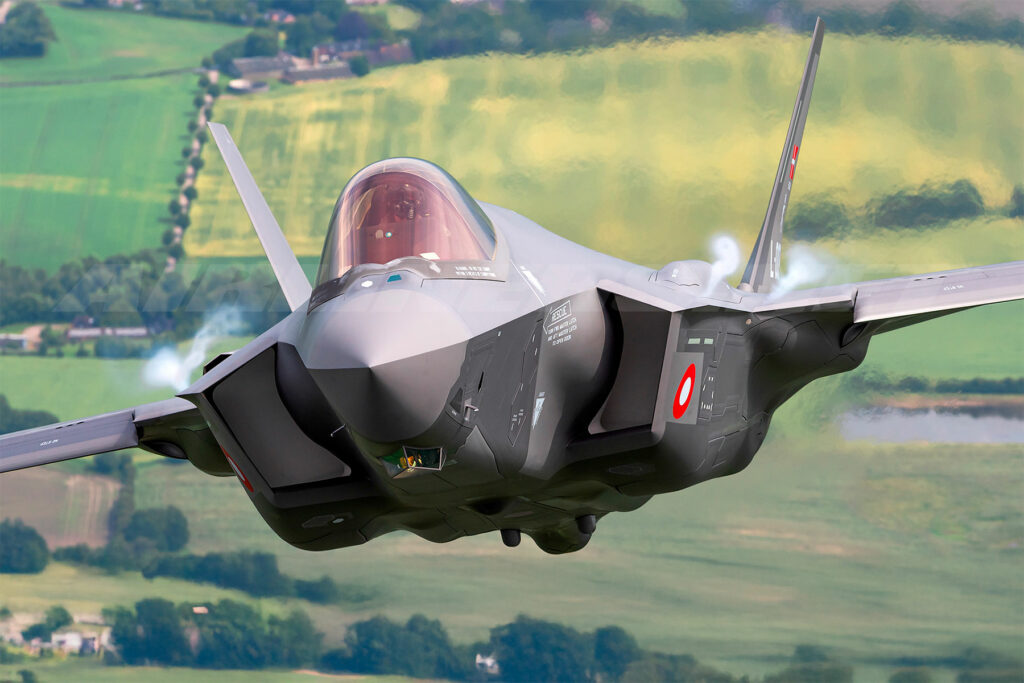
Technical analysis of the increase in maximum thrust of fighter aircraft, with and without afterburner, over time.
Maximum thrust is an essential criterion for assessing fighter aircraft performance. It determines the aircraft’s ability to accelerate, climb and maneuver. From the first jets of the Second World War to today’s fifth-generation fighters, engine thrust has increased considerably, thanks in particular to the introduction of afterburning. This technology allows additional fuel to be injected into the exhaust gases to temporarily increase thrust. This article explores the technical evolution of maximum fighter thrust, highlighting the technological advances and associated challenges.
The rise of the first jet engines
The first jet fighters, such as the German Messerschmitt Me 262 introduced in 1944, were equipped with jet engines producing relatively low thrust. The Me 262 used two Junkers Jumo 004 engines, each producing around 8.8 kN of thrust without afterburner. This low thrust limited the aircraft’s overall performance, particularly in terms of acceleration and rate of climb.
After the war, advances in metallurgy and aerodynamics made it possible to increase engine thrust. For example, the British Gloster Meteor, which entered service in 1944, was fitted with Rolls-Royce Derwent engines producing around 16 kN of thrust each. Although these improvements were significant, aircraft of this era were still limited by the absence of afterburning.
The introduction of afterburning in the 1950s marked a major turning point. This innovation made it possible to temporarily increase thrust by injecting additional fuel into the exhaust jet, considerably improving speed and altitude performance. The North American F-100 Super Sabre, for example, was equipped with a Pratt & Whitney J57 engine that produced 44.5 kN of thrust without afterburner, and up to 71.2 kN with afterburner.

The impact of afterburning on performance
Afterburning has revolutionized the capabilities of fighter jets, enabling them to reach supersonic speeds. However, this technology also has its drawbacks, notably very high fuel consumption. As a result, pilots need to manage the use of afterburners carefully to avoid rapidly depleting their fuel reserves.
The Mikoyan-Gurevitch MiG-21, introduced in the 1950s, is a good example of this balance. Equipped with a Tumansky R-25 engine, it could produce a maximum thrust of 40.2 kN without afterburner, and up to 69.6 kN with afterburner. This enabled it to reach a top speed of 2,175 km/h, but at the cost of reduced range.
In the 1970s and 1980s, engines continued to evolve, offering greater efficiency and thrust. The General Dynamics F-16 Fighting Falcon, for example, is equipped with a Pratt & Whitney F100 engine that produces around 76.3 kN of thrust without afterburner and 127 kN with afterburner. This significant increase has enhanced the aircraft’s maneuvering and combat capabilities.
Recent technological advances
Fifth-generation fighters, such as the Lockheed Martin F-35 Lightning II, benefit from even more powerful and efficient engines. The F-35 is equipped with a Pratt & Whitney F135 engine that produces a maximum thrust of around 125 kN without afterburner and 191 kN with afterburner. This increased power allows for short take-offs, supersonic speeds without afterburner (supercruise) and greater carrying capacity.
Another example is the Russian Sukhoi Su-57, powered by Saturn AL-41F1 engines producing a maximum thrust of 93.1 kN without afterburner and 147 kN with afterburner. These engines are designed to offer supercruise capability, reducing dependence on afterburner power and improving fuel efficiency.
Recent innovations have also focused on reducing the engines’ thermal and radar signatures, and integrating advanced thermal management systems. These improvements aim to increase aircraft stealth while maintaining high thrust.

Energy and environmental challenges
Despite progress, fuel consumption remains a major challenge. Afterburning, while effective in increasing thrust, results in disproportionately high fuel consumption. Engineers are therefore exploring alternatives, such as high-dilution bypass engines, to improve efficiency without sacrificing performance.
The development of new materials resistant to higher temperatures also makes it possible to increase thrust without increasing engine size or weight. Research into adaptive-cycle engines could offer variable thrust depending on mission requirements, thus optimizing fuel consumption.
Environmental considerations are also becoming increasingly important. The reduction of pollutant emissions is becoming a criterion in the design of new engines. The use of alternative fuels, such as biofuels or synthetic fuels, is being studied to reduce the environmental impact of military aircraft.
Future prospects and expected innovations
The future of fighter aircraft maximum thrust will depend largely on technological advances in the field of propulsion. Hypersonic engines, for example, could enable speeds in excess of Mach 5, but pose challenges in terms of materials and thermal management.
Electric or hybrid propulsion is also an area of research, although its application to fighter aircraft is still some way off due to current limitations in battery energy density. However, electric auxiliary systems could improve overall aircraft efficiency.
Finally, artificial intelligence and advanced control systems will enable thrust utilization to be optimized in real time, adapting engine performance to flight conditions and mission requirements. This could lead to more efficient use of the afterburner and optimal fuel management.

War Wings Daily is an independant magazine.